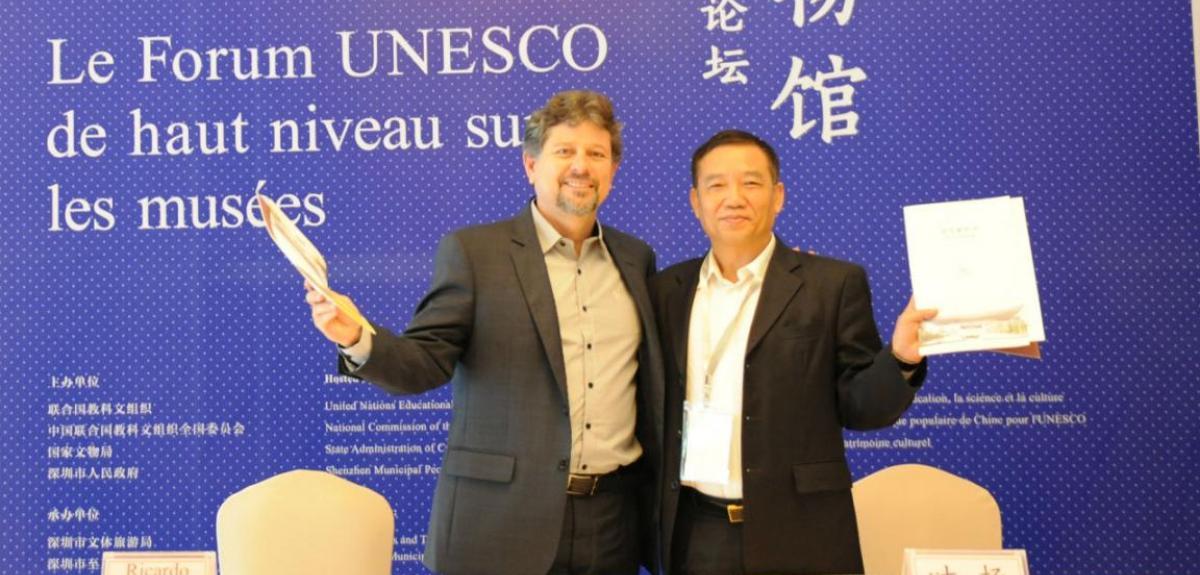MUSEUM OF TOMORROW IS FEATURED ON THE HIGH LEVEL FORUM ON MUSEUMS IN CHINA
The president of the Museum of Tomorrow, Ricardo Piquet, signed a Cooperation Agreement between the institution and the Shenzhen Museum of China. In an official visit at the invitation of UNESCO, Piquet participated in the panel "New Avenues of Creativity" at the High Level Forum on Museums, presenting the case of inclusion and formation of new museum audiences. During the event, Piquet highlighted the importance of the role of museums as an instrument of social inclusion and dissemination of culture and diversity.
Reiterating the importance of the social, educational and economic role of museums, the Forum was attended by representatives from the world's leading museums, discussing new trends and public policies in the sector, preservation of cultural heritage, technological standards for museums and how to best involve and benefit communities, in addition to
discussing the implementation of the 2015 Recommendation - on protection and promotion – and the reinforcement of international cooperation in the field of museums. UNESCO points out that in the last 40 years the number of museums has doubled worldwide, with a substantial impact on the promotion of cultural heritage and diversity of countries.
GOOGLE ARTS and CULTURE
The Museum of Tomorrow has just launched two more virtual exhibits on the Google Arts & Culture platform. The exhibits features photos and videos about the era of profound
transformations that the planet is going through because of human actions, called by scientists the Anthropocene.
"Planet in metamorphosis" shows the changes that we cause in the climate, in the biodiversity and in the water cycle, besides the great challenges that we face due to the predatory way with which we deal with the environment. "The Human Age" tells of humanity's long two- hundred-thousand- year journey that has explored, occupied and now surpasses the planets boundaries not only by space exploration, but because it draws more resources from nature than it is capable of replacing.
The two exhibitions are part of a worldwide launch of Google Arts and Culture, which brings together some of the world's most iconic natural history institutions. Advanced technology gives a new virtual life to extinct animals and displays the evolution of our planet over billions of years. Viewers will stand in front of the Jurassic giants in 360 degree videos, getting a better sense of how these animals lived, and how they would feel in their presence.
The exhibits at the Museum of Tomorrow show a new chapter in natural history that is being written by humans today, leaving deep imprints on the soils, oceans, atmosphere and life of other species. They join other collections already launched by the museum that can also be viewed for free, in Portuguese and English, on the computer or on mobile devices, in the Google Arts and Culture application available for iOS and Android.
By July, the Museum of Tomorrow had already launched nine exhibitions on the Arts & Culture platform, which numbered about 1,500 photographs of the port area and the Guanabara Bay, and themes related to sustainability and the limits of the planet, also featuring a Street View and a tour with the Cardboard virtual reality glasses, narrated by two Cariocas who are also part of the team of the Museum of Tomorrow.

